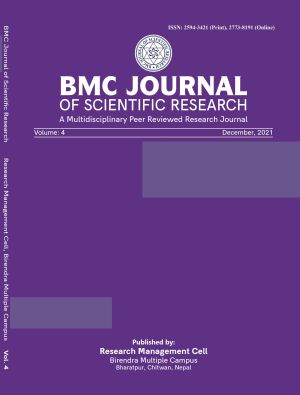Resistance through Female Bonding in Tehmina Durrani's Blasphemy
DOI:
https://doi.org/10.3126/bmcjsr.v4i1.42257Keywords:
Blasphemy, femal bonding, patriarchy, Islam, female selfhoodAbstract
The present research article analyses the suffering of women and their resistance against oppressive Islamic patriarchy through female bonding in Tehmina Durrani’s Blasphemy. In doing so, it offers the working definition of the term “feminism” as a tool of inquiry. It mainly focuses on the suffering of Heer, the protagonist of the novel, due to her loveless marriage with Pir Sain. It exposes the easy distortion of Islam by so-called hypocritical religious leaders like Pir Sain. The suffering of Heer and other female characters in the novel reveal the problems in the cultural and social setting of the Islamic culture and religion. Heer is repeatedly beaten, raped and humiliated by her abusive husband Pir. Pir forces her to live in the world that he has constructed for her. Her marriage with Pir utterly fails as it turns out to be a source of trouble and repression of her self-satisfaction. When she fails to tolerate severe torture and domestic violence, she decides to revolt against it. This paper concludes that Heer is able to resist sexual abuse and exploitation through female bonding. In doing so, she is able to assert her female selfhood.
Downloads
Downloads
Published
How to Cite
Issue
Section
License
Copyright (c) 2021 Research Management Cell Birendra Multiple Campus, Bharatpur, Chitwan, Nepal

This work is licensed under a Creative Commons Attribution-NonCommercial-ShareAlike 4.0 International License.




